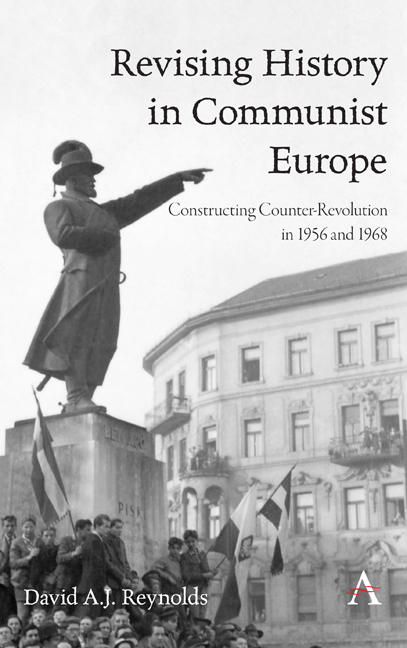Book contents
- Frontmatter
- Dedication
- Epigraph
- Contents
- Acknowledgements
- Introduction
- 1 The Export and Imposition of Stalinism
- 2 Hungarian De-Stalinization and Revising Recent History
- 3 A Revolution, a Counter-Revolution, or a National Uprising?
- 4 Stalinist Purges and De-Stalinization in Czechoslovakia
- 5 The Meaning of 1956 in 1968: March to June
- 6 June: Turning Point and the Hardening of Positions
- 7 July and August: Constructing Counter-Revolution
- 8 The Intentions of Intervention and the Shadow of 1956: Delusion and Failure
- Conclusion
- Epilogue
- Appendix
- Bibliography
- Index
4 - Stalinist Purges and De-Stalinization in Czechoslovakia
Published online by Cambridge University Press: 16 February 2020
- Frontmatter
- Dedication
- Epigraph
- Contents
- Acknowledgements
- Introduction
- 1 The Export and Imposition of Stalinism
- 2 Hungarian De-Stalinization and Revising Recent History
- 3 A Revolution, a Counter-Revolution, or a National Uprising?
- 4 Stalinist Purges and De-Stalinization in Czechoslovakia
- 5 The Meaning of 1956 in 1968: March to June
- 6 June: Turning Point and the Hardening of Positions
- 7 July and August: Constructing Counter-Revolution
- 8 The Intentions of Intervention and the Shadow of 1956: Delusion and Failure
- Conclusion
- Epilogue
- Appendix
- Bibliography
- Index
Summary
Czechoslovakia had, in many ways, a paradoxical place in the post-war Soviet sphere. Its relatively advanced economy and long-established industrial base made it both a more ideologically natural seat of communist power and an outlier in a bloc full of countries only introduced to large-scale industrial development by the communist takeover. Czechoslovakia's (and particularly Bohemia and Moravia's) more conventionally Western path of development before the war gave it a stronger base of genuine communist support. Therefore, it is perhaps simultaneously surprising and predictable that, before 1968, Czechoslovakia was arguably the Soviet Union's most dependable bloc ally, yet one that both came late to show trials and proved most impervious to Soviet-encouraged de-Stalinization.
The transition to complete communist control in Czechoslovakia had been achieved in relatively unequivocal fashion during the first half of 1948. The Komunistická Strana Československa (KSČ – Communist Party of Czechoslovakia) that seized power enjoyed a level of continuity unmatched in other Central European contexts. The party's chairman, Klement Gottwald, who also ascended to Prague Castle as president of the republic in June 1948, had led the KSČ since 1927. Perhaps this relative stability accounts for the fact that, unlike Rákosi, Gottwald did not leap at the opportunity to emulate the Stalinist practice of public party purges and show trials. But it was both Rákosi's insistence and the widening MDP witch-hunt against supposed conspirators in Hungary that, effectively, started the Czechoslovak equivalents.
The May 1949 ÁVH interrogations in Hungary, designed to force confessions and create a Rajk conspiracy, also implicated a number of Czechoslovak citizens. Tibor Szőnyi, whose torture-induced implication of Rajk was the last step before Rajk's arrest on 30 May (Szőnyi shared his ultimate fate), pointed the finger at two Czechoslovak Communists, Géza Pavlík and Charlotte Pavlíková. After successfully achieving the Pavlíks’ extradition to Hungary the ÁVH tortured them for a month, extracting the names of 60 further Czechoslovak Communists supposedly involved in a Trotskyite plot. Rákosi handed these names personally to Gottwald during a Prague visit at the end of June. But Gottwald's response was limited. While some on the list – Géza Pavlík and nine others – were tried and convicted of espionage, most were left alone for lack of evidence. In other words, while Rákosi was busy creating evidence and history, Gottwald was still, to some degree at least and within the party, looking for it.
- Type
- Chapter
- Information
- Revising History in Communist EuropeConstructing Counter-Revolution in 1956 and 1968, pp. 69 - 94Publisher: Anthem PressPrint publication year: 2020



